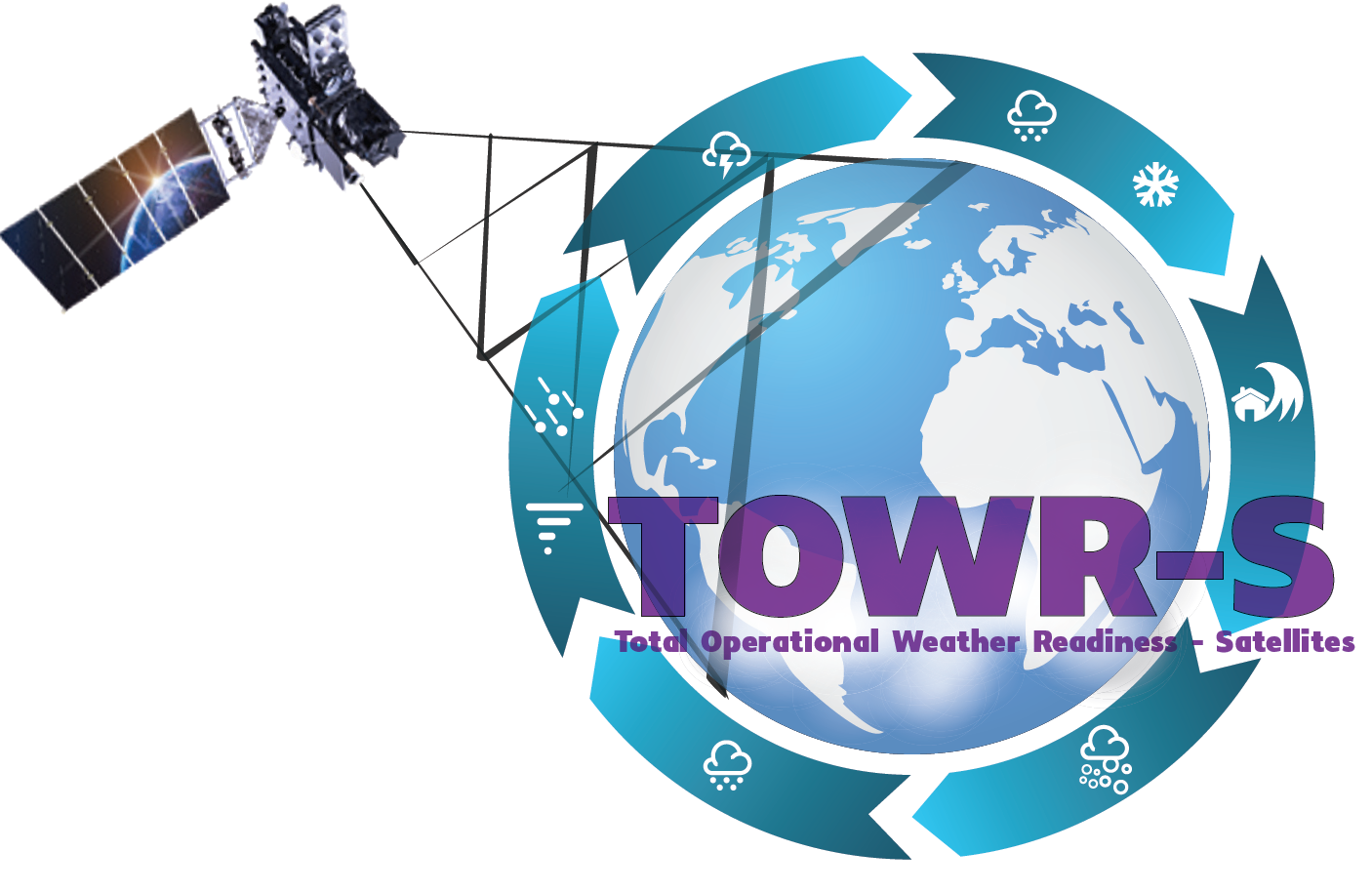TOWR-S RPM Communications - Total Operational Weather Readiness - Satellites (TOWR-S)
 GOES-16 AWIPS RPM June 2017 Release Newsletter
GOES-16 AWIPS RPM June 2017 Release Newsletter
By: the NWS Office of Observations' Total Operational Weather Readiness - Satellites (TOWR-S) Team
The NCF has made the June version version of the GOES-16 RPM available in the AWIPS repository, and installation instructions are here.
RPM Highlights
The TOWR-S team has been working with the NWS/NESDIS Satellite Enhancement Team (SET) on a weekly basis to bring these new AWIPS satellite improvements to you. Three SOOs, Frank Alsheimer (CAE), Mike Stavish (MFR) and Brian Carcione (HUN) participate regularly with the SET. Their leadership guides the team to make changes to AWIPS configurations files that allow NWS forecasters to best utilize GOES-16 data. Thanks to their insight, we offer to you the following AWIPS enhancements in the June 2017 version of the RPM:
1. The “Geostationary GOES-Center” map choice has been removed. This was done because adding this map in the May 2017 RPM overwrote site level scale files owned by each WFO.
------------------------------------------------------------------------------------------------------------
2. Corrected configuration file error to enable proper handling of derived products in Mesoscale sectors 1 and 2. This fixes the problem of the sectors "flashing" on the screen.
------------------------------------------------------------------------------------------------------------
3. Updated the GOES-R Day Snow-Fog RGB to match EUMETSAT and JMA products. This RGB now appears in the "Advanced RGB" section of the "RGB Composites" menu.
------------------------------------------------------------------------------------------------------------
4. The "Fire Temperature RGB" has been modified to improve fire hot spot detection. The "Fire Temperature RGB combines information from three shortwave IR bands (ABI Bands 5, 6 and 7) to provide information on fire intensity. In this RGB composite, the red component is Band 7 (3.9 um), the green component is Band 6 (2.25 um) and the blue component is Band 5 (1.6 um). As a general rule, the more intense a fire is burning, the more it emits radiation at shorter wavelengths. Band 7 is capable of detecting most fires. Less intense fires will only be detected in Band 7 and appear bright red. Moderately intense fires will be detected by both Band 7 and Band 6 and appear orange to yellow, depending on intensity. The most intense fires will be detected by all three bands and appear white.
------------------------------------------------------------------------------------------------------------
5. There is a new RGB called the "Day Land Cloud Fires" RGB. The "Day Land Cloud Fire" RGB is similar to the "Day Land Cloud" RGB except the 2.2 µm band is assigned to the red component of the image. This change highlights fire hotspots with a red pixel color, but also changes the interpretation of the water vs. ice clouds compared to the "Day Land Cloud" RGB. For the 2.2 µm band, water clouds are less reflective than the 1.6 µm band, resulting in both water and ice clouds having cyan coloring, except for very small cloud particles. Thus, the change limits the use of the RGB for differentiating water vs ice clouds. Land/Ocean surfaces are in expected colors (but not true color). In summary this RGB uses ABI bands 2, 3, and 6 with Band 6 (2.2 um) in the red component, Band 3 (0.86 um) in the green component, and Band 2 (0.64 um) in the blue component and is primarily intended for fire hot spot identification.
------------------------------------------------------------------------------------------------------------
6. Updated the Satellite Moisture Channel Difference (10.3-12.3 um). The display range has been modified to aid discrimination of dust and volcanic ash (values in the range -1°C to -6°C). The display range was changed from -1°C < T < +10°C to -15°C< T < +15°C. The colormap has been changed from the channel-difference default to dust_and_moisture_split_window.
7. Modified the upper-limit value for the 3.9um band (Ch 07), from 55C to 127C, to improve fire detection, while continuing to set the enhanced-rainbow_warmer-yellow as the default. An additional color table, fire_detection_3.9, has also been added for selection under the GOES-R color maps, for use with the with the 3.9um band. Most of the image will typically be grayscale, but the hottest pixels are yellow to orange to red, starting with brightness temps around +40 C. The hottest pixels, associated with fires, will be red. In mid-summer in the middle of the day, regions with a hot background may show large areas with yellow values, so the table should be manually modified in that situation by moving the black values into the regions from +40 to +60 C.
------------------------------------------------------------------------------------------------------------
8. Updates the Satellite Fog Channel Difference (10.3-3.9 micron). Adds a new display range from -15C to 15C, along with a new color table (fogdiff_blue) to aid fog detection. The 10.3-3.9 difference is the traditional "fog product" and like previous GOES, can be used to detect low liquid water clouds at night. The color table is designed so that liquid water clouds, which include fog and stratus clouds, will be a shade of blue and everything else grayscale. The darker the blue, the more likely the clouds are actually liquid water clouds. Some false alarms exist over some land areas, particularly desert regions in the southwest U.S. Forecasters can easily become accustomed to these false alarms because they will show up day after day in the same areas in clear sky conditions. After sunrise, the solar reflected component makes this color table no longer applicable for low cloud detection.
----------------------------------------------------------------------------------------------------------
9. Removes the 6-hour edex purge rule configuration file for GOES-16 products. This reverts to the baseline edex purge of 24 hours for GOES-16 plugin imagery and derived products. This was done to no longer overwrite a site's local purge rule settings during install.
----------------------------------------------------------------------------------------------------------
For the sake of continuity, it is not recommended that sites skip these RPM updates.
That's all for this month!
If you have issues installing the RPM, please contact the NCF.
If you have any questions or feedback about the RPM contents, please contact Eric Guillot at NWS HQ at eric.guillot@noaa.gov or 301-427-9250.
See you in July!



